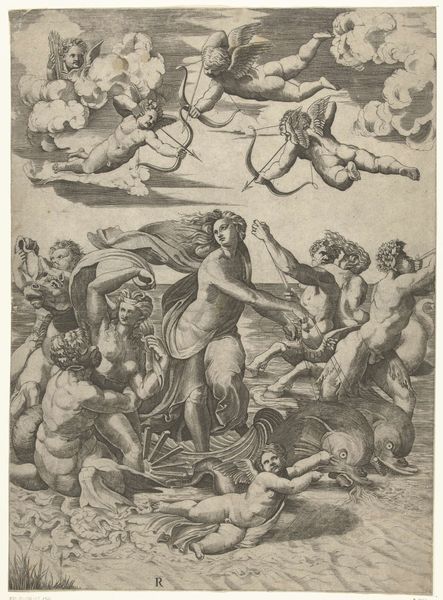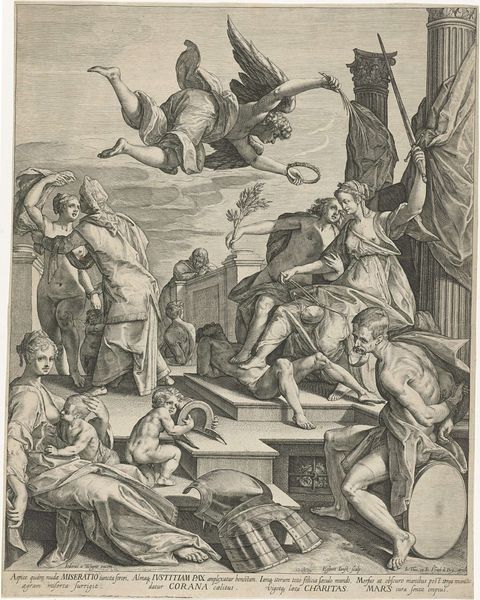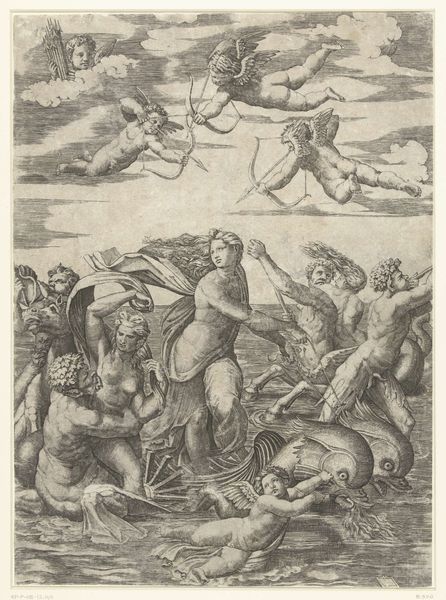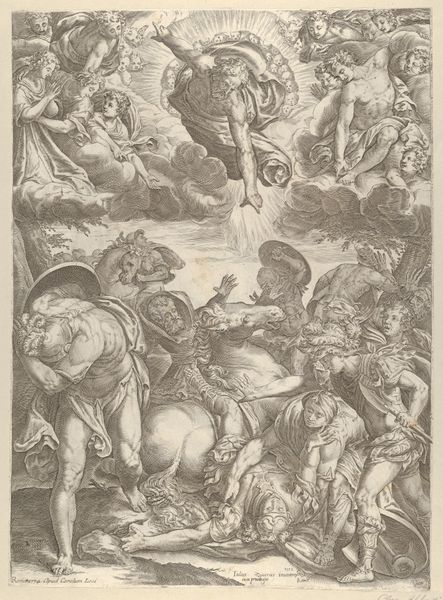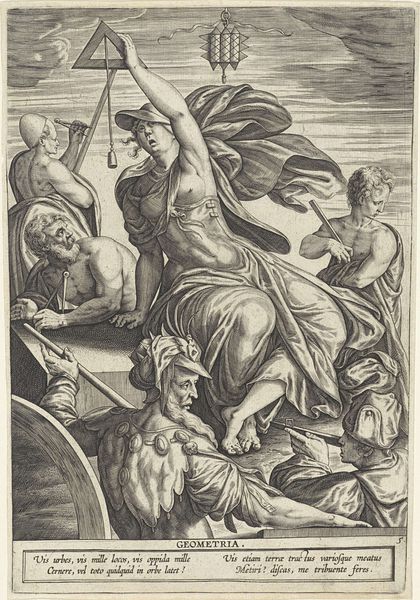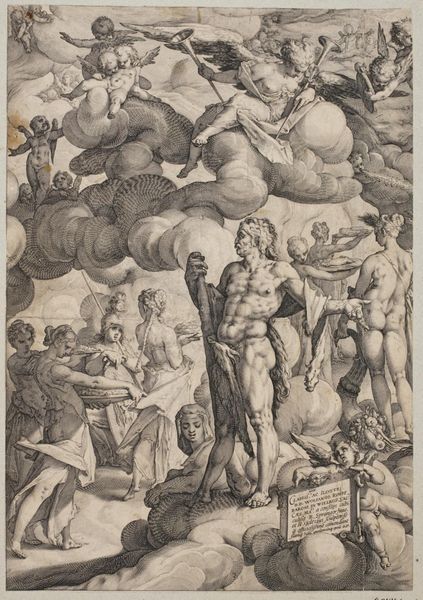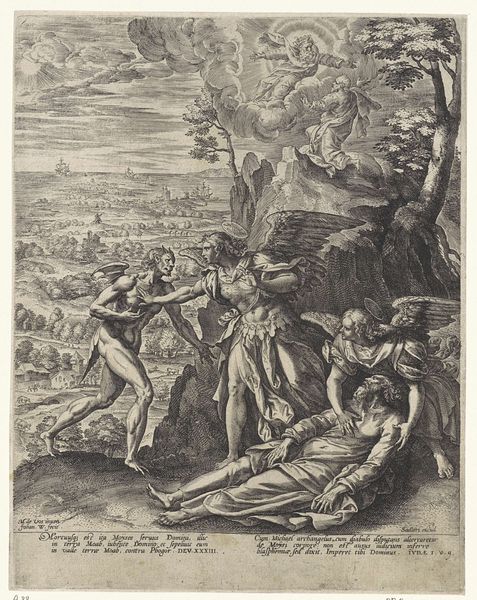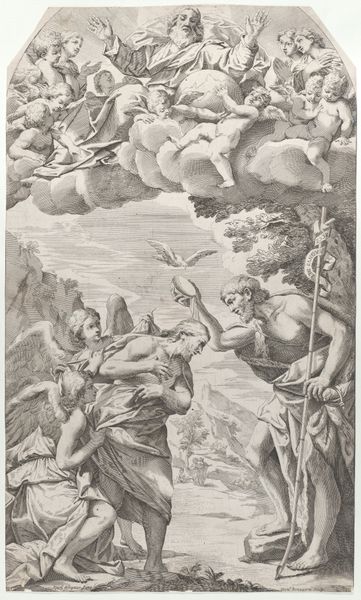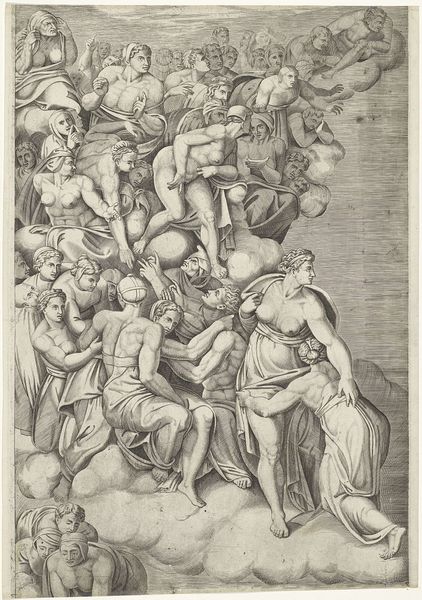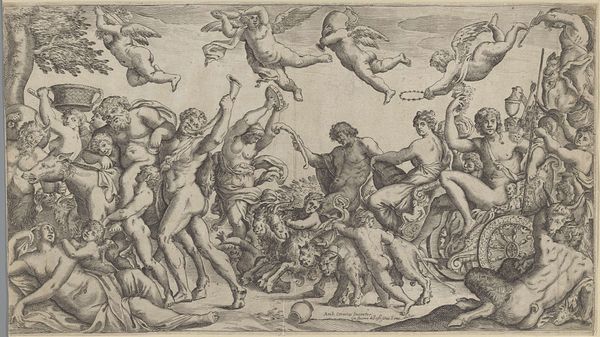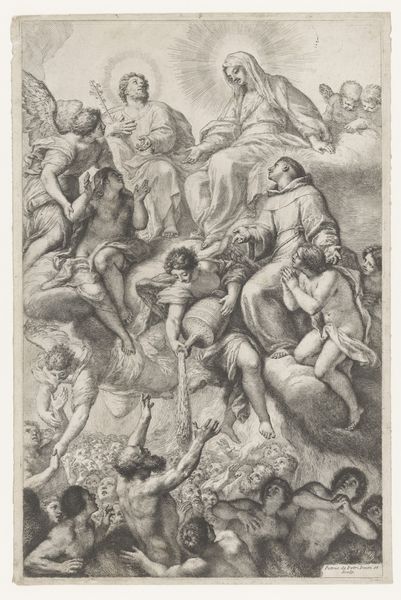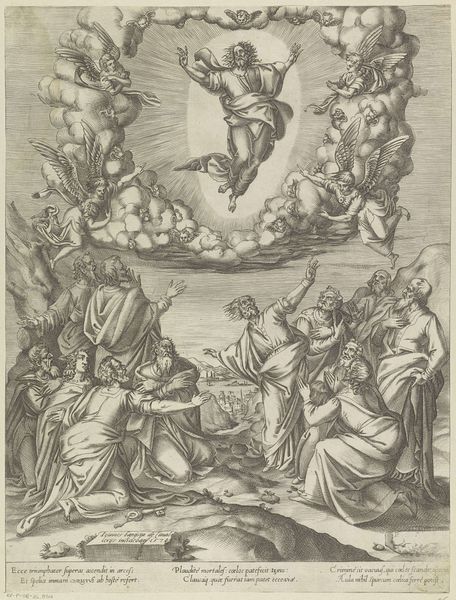
print, engraving
#
allegory
# print
#
landscape
#
mannerism
#
figuration
#
mythology
#
history-painting
#
nude
#
engraving
Dimensions: height 563 mm, width 418 mm
Copyright: Rijks Museum: Open Domain
Hendrick Goltzius created this engraving, “The Triumph of Galatea,” at the end of the 16th century in the Netherlands. The image depicts Galatea, a sea nymph from Greek mythology, surrounded by other figures from classical myth. Looking at this print, we can see the Italian Renaissance style of art that dominated Europe at the time, making it the standard against which other artwork was judged. As a result, a clear hierarchy of art was established through institutions such as academies. Goltzius had to show his skill in representing classical forms and subjects. The image also emphasizes the classical idea of beauty, where the female body is idealized and eroticized. In this way, we can consider how the image works within the social context of its time, reinforcing established class and gender dynamics. By researching the institutions, artists, and aesthetic ideals of the 16th century, we can understand the social context in which it was made, deepening our appreciation of it.
Comments
No comments
Be the first to comment and join the conversation on the ultimate creative platform.
